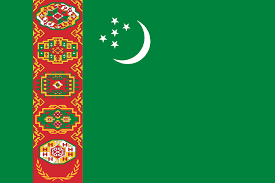Language/Turkmen/Grammar/Noun-Gender-and-Plurals
In this lesson, we will learn about noun gender and plurals in the Turkmen language. We will explore the classification of nouns based on gender and how to form plural nouns. As you might already know from your studies in Turkmen, the language is known for its colorful expressions and rich cultural background, which is evident in the ways its nouns are used and formed.
Noun Gender
In Turkmen, nouns are not classified by gender like in some other languages such as Spanish, French, or German. This means there is no need to worry about learning separate articles or adjective endings depending on whether a noun is masculine, feminine, or neuter. Instead, Turkmen nouns are categorized solely based on their meaning and form, without respect to a gender classification.
However, it is essential to be aware of certain nouns that specifically denote male or female distinctions, especially when talking about people or animals.
Here are some examples of gender-specific nouns:
| Turkmen | Pronunciation | English |
|---|---|---|
| adam | /aˈdam/ | man |
| zenan | /zeˈnan/ | woman |
| oglan | /oˈɡlan/ | boy |
| gyz | /ɡyz/ | girl |
| doglan | /doɡˈlan/ | son |
| gyzyk | /ɡyˈzɯk/ | daughter |
| erk | /erk/ | husband |
| ayal | /aˈjal/ | wife |
| ata | /aˈta/ | father |
| eje | /eˈje/ | mother |
Now let's move on to learning how to form plural nouns in Turkmen.
Noun Plurals
The regular way of forming plurals in Turkmen is by adding the suffix "-lar" or "-ler" to the end of a noun. The choice between these two suffixes is determined by vowel harmony, a principle that pervades the Turkmen language and dictates how vowels within words should "match" or "harmonize" with each other.
Here is a general rule for choosing the right plural suffix:
- If the noun contains one of the vowels 'a', 'o', or 'u', you'll add the "-lar" suffix.
- If the noun contains one of the vowels 'e', 'i' or 'ü', you'll add the "-ler" suffix.
For most Turkmen nouns, forming plurals is simple and straightforward, following these general guidelines. Here are some examples of regular plural noun formations:
| Turkmen | Pronunciation | English |
|---|---|---|
| kitap | /kiˈtap/ | book |
| kitaplar | /kiˈtapɫar/ | books |
| gyýy | /ɡyːj/ | clothes |
| gyýyler | /ɡyːjler/ | clothes (plural) |
| agaç | /aˈɡatʃ/ | tree |
| agaçlar | /aˈɡatʃlar/ | trees |
| ynanç | /yˈnantʃ/ | belief |
| ynançlar | /yˈnantʃlar/ | beliefs |
In some cases, there are irregular plurals, where the plural form is different from just adding the regular suffixes. While these are not numerous in Turkmen, they still exist and should be memorized. Here are a few examples of irregular plurals:
| Turkmen | Pronunciation | English |
|---|---|---|
| suw | /suw/ | water |
| sular | /suˈlar/ | waters |
| gün | /ɡyn/ | day |
| günler | /ˈɡynler/ | days |
| öý | /øj/ | house |
| öýler | /øjler/ | houses |
In this lesson, we have covered the topic of noun gender and plurals in Turkmen. We learned that unlike some other languages, Turkmen nouns do not have a gender classification, which makes it easier for learners, as there are no related articles or adjective endings to learn. We also discussed the rules for forming regular plural nouns, as well as some irregular plurals. Keep practicing and expanding your vocabulary, as you continue your journey towards mastering the Turkmen language!
Related Lessons
- Ordinal Numbers
- Nouns
- Question particle–my mi
- Adjectives
- Future Tense
- The Subjunctive Mood
- Common Prepositions
- Personal Pronouns
- Past in the past (pluperfect)
- To have

